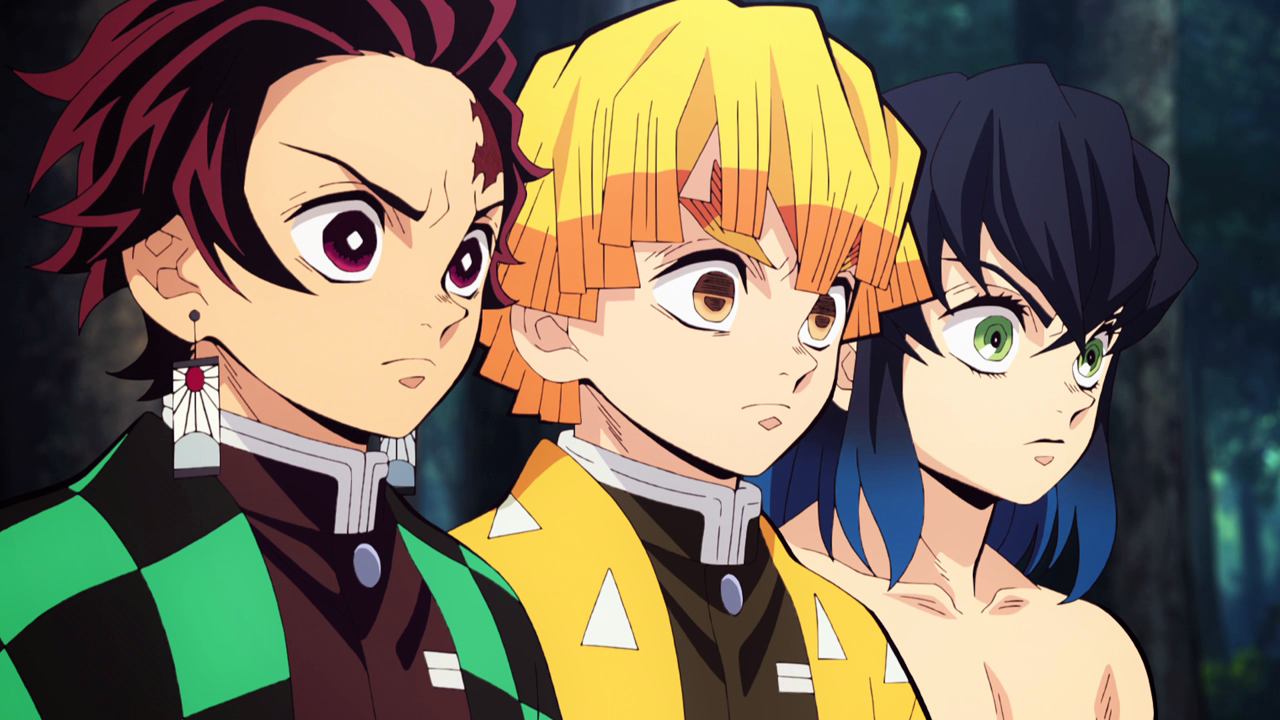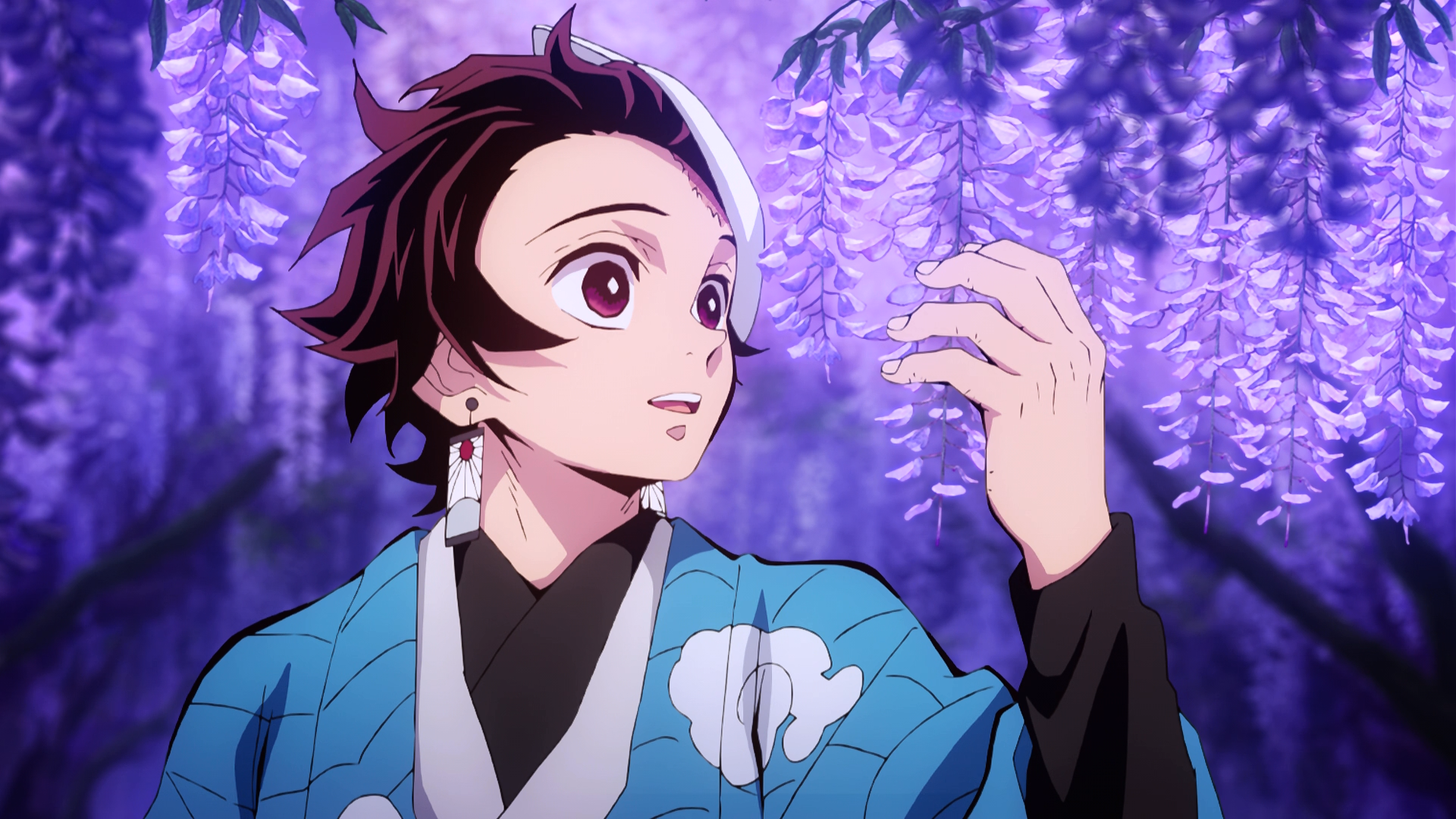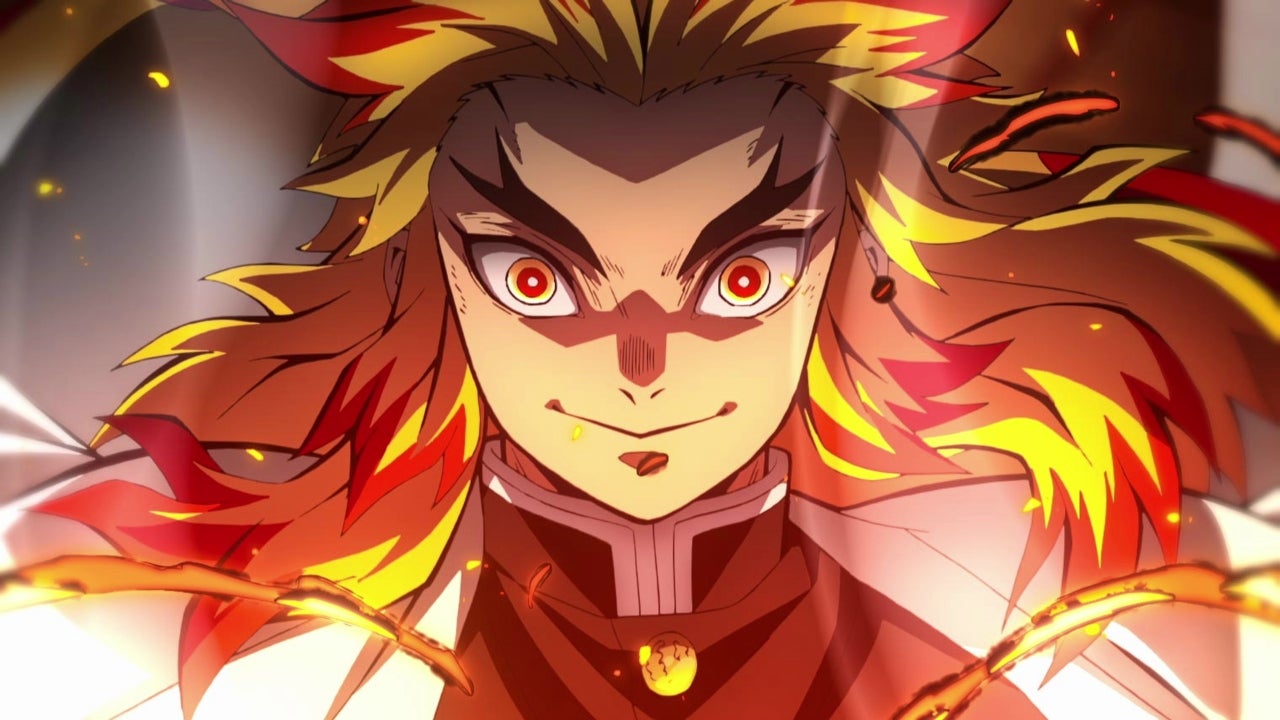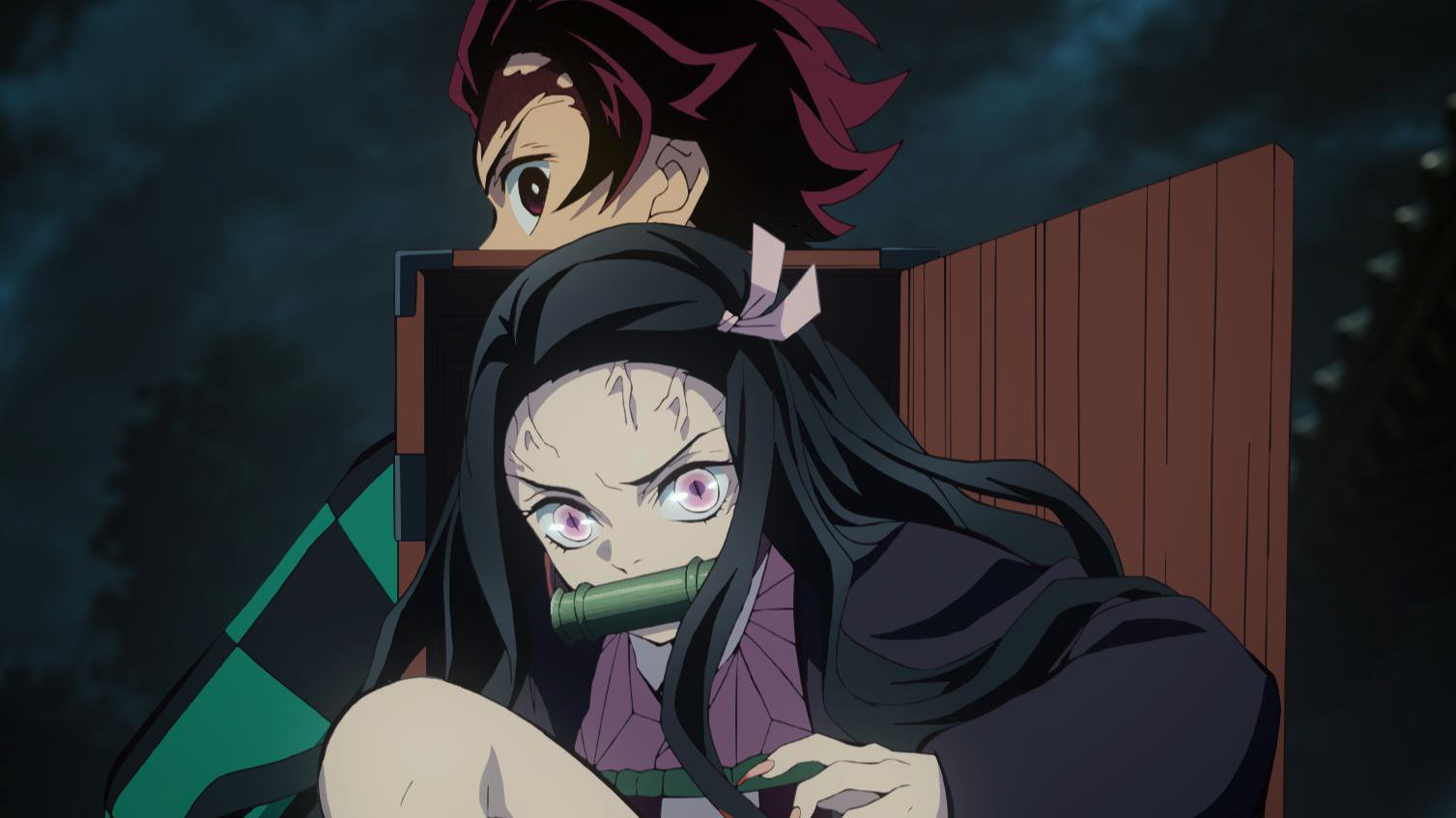Table of Contents Show
If you’re an avid anime fan or even just a casual one, there is a possibility that you have heard the words Demon Slayer before. Whether you’ve come across a conversation on social media or encountered fanart and cosplay, it’s clear that the anime has made a splash all across the board. It has garnered an immense amount of attention, much like mass hits such as Attack on Titan and My Hero Academia, and the hype is just as real. With a second season coming later this year and a feature film already released, Demon Slayer shows no sign of slowing down, leaving the fandom with much more to stay hyped about.

But what makes Demon Slayer so popular? As the anime continues to take the world by storm, some actually wonder what makes it so alluring. The fact of the matter is that Demon Slayer isn’t just a typical, run-of-the-mill shounen series; it is far more complex and powerful than that. From its classic storytelling to its lovable characters to the way the artwork reflects the mood of each scene, Demon Slayer is already captivating in an artistic right. But what makes it stand out distinctively is how it strays from many shounen norms – in a positive way.
Straying From Shounen Norms
Demon Slayer has taken the shounen genre by storm and has shaken things up in more good ways than one. Shounen stories mostly revolve around a young male protagonist pursuing a certain goal and usually uses action and fight scenes to move the plot along. The protagonist is often written as endearing and almost overly determined to the point of naivety, which usually hits him hard at the climax of the story. The typical shounen protagonist, though inspiring, usually has goals that revolve mostly (if not only) around the pursuit of getting stronger.

For example, Naruto from the hit anime Naruto/Naruto Shippuden has a goal of becoming Hokage, the strongest ninja in his village. The Hokage is often treated with reverence and is someone that most aspire to become like. Deku from My Hero Academia aspires to be the world’s greatest hero and follow in the footsteps of All Might, one of the strongest heroes in the world. And though both of these protagonists have similar goals, they aren’t entirely selfish. Protecting and saving others comes with the job of being the strongest, even if it takes a toll on their emotional state. Tanjiro, however, is different.
While keeping the same elements of traditional shounen, Demon Slayer defies the norm in more good ways than one. Though Naruto and Deku have had a set goal in mind for years, Tanjiro didn’t have much time to think about his goal. In fact, he didn’t have much of a choice. After finding his family slaughtered with the exception of one, his sister Nezuko, Tanjiro could only make one decision, which was to try and save her. This goal technically stays consistent throughout the series, even after discovering that Nezuko had been turned into a demon. He very well could have let Tomioka put Nezuko out of her misery but refused to let go of the one person left that was closest to him.

Tanjiro’s love was strong enough that he didn’t care what had to be done. He had already decided to protect Nezuko until the very end if it came down to that. When Nezuko does recognize this, she remembers who Tanjiro is, and her actions shift from attacking to protecting him. It’s not uncommon for the shounen protagonist to connect with someone and form a close bond, which usually plays a huge role in moving the story along. Normally we see these characters as rivals, best friends, or brother-like figures. For example, Naruto and Sasuke, Deku and Bakugou, etc. In this case, Tanjiro’s bond is with his own sister, someone he keeps fighting to save.
Bringing Back The Art Of Storytelling
Demon Slayer has gone back to the roots of classic storytelling in not only the plot alone but through the vibes that the series gives off. With stunning visuals and fluid animation, this particular anime gives off a far more distinctive tone compared to the rest. The story doesn’t ease into itself either, as it starts pretty abruptly and successfully hooks the viewer instantly, which is not always an easy feat. Typically shounen anime is something that takes time to develop before delving deeper into the story. You’ve probably been told before to try and “stick with” a certain anime because though it starts slow, it’s okay because apparently, it gets really good. This is not the case with Demon Slayer. Demon Slayer already establishes the goals of the story in the first episode, not caring much about introductions, but instead dives headfirst into the meat and potatoes of the story.

The plotline is clear, yet there is still room for many clever surprises and twists that keep the viewer on the edge of their seat. The vibe is almost nostalgic, like opening up an old storybook and looking through detailed pictures. Demon Slayer has used color and tone to set the mood for certain scenes, which is an artistic technique that has started to slowly disappear from modern-day films and anime. This technique establishes the tone and works perfectly for particularly emotional moments, and emphasizes points of symbolism in the story.

The wisteria trees, for example, are something viewers are often brought back to. The lavender color gives off a soft glow and gives off a peaceful vibe, surrounding Tanjiro in almost a protective manner. He seems to always be at peace when near wisteria, and its colors always stand out over the rest of the scenery when shown. It’s almost as if the trees represent protection and give a calming effect to Tanjiro and the viewer.
Natural Character Development
Gotouge’s characters are complex, and every new character that is introduced is interesting (including the bad guys!), leaving the audience genuinely curious to hear more about them and how they connect to the story. The character development is fantastic, even only after one season. We watch as main protagonist Tanjiro fights his way through one difficult obstacle after another, all for the sake of his sister. Even when things started to get rough, and each obstacle became more difficult than the last, Tanjiro still refused to go down until he had truly given it his all. What was once a frightened child desperate to keep his sister alive by any means (even if it meant mindlessly throwing himself into danger) has turned into a young man who uses his power to protect. Tanjiro continues to stand tall despite the odds and doesn’t lose his humanity along the way either.

Many shounen protagonists have gotten pushed to a point where they “rage” or lose all control of themselves and their power when they are pushed over the edge physically, mentally, and emotionally. They lose themselves to fear of failure and eventually tap into this immense amount of power, destroying either themselves, their surroundings, etc., before getting back on a proper footing again. This isn’t seen with Tanjiro. Though it is still early on in the story, there are many times where Tanjiro could have lost his emotions to sadness and rage, especially after what happened to his family. But Tanjiro seems to have an air of calmness about him, even in his most distressing moments. He seems to keep his mind fixated on the task at hand and rarely strays from it.
In the beginning, Tanjiro didn’t have this way of thinking. He immediately went with his body’s automatic fight or flight response, which resulted in him ultimately acting without thinking. This changes significantly through proper training mixed with experience, and Tanjiro is able to stay calm in most situations while still getting the job done. Once again, Tanjiro doesn’t have to sacrifice his humanity to tap into his power. In fact, he still holds an immense amount of compassion even as he grows stronger. He continues to say prayers for the cursed souls of demons that he has slain. His kindness and respect towards his friends and elders aren’t lost no matter how many mentally straining situations he’s been in. He is even the center of security for his comrades, who reassures them in not so many words, but by his actions and speech, that things will be okay and to just keep their eyes on what’s ahead. Even the anxiety-induced Zenitsu and hotheaded Inosuke seem to find their calm once they are around Tanjiro long enough.

Whether or not this will change as the story progresses, the fact still remains that Gotouge does a fantastic job with their characters, writing them in an almost artistic way. Gotouge incorporates these shounen tropes and qualities to the characters while also adding a bit of mystery surrounding them, making them not as predictable as overly done tropes have done in the past. Tanjiro and the rest of the characters are fleshed out with individual qualities that aren’t extremely cliche or biased. Yes, there are still typical shounen traits that are clearly visible, but they are done in a way that is balanced and not overly done. There is no mindless dawdling when it comes to pushing the story and its characters along, and it seems like everyone is connected in some way, bringing those classic destiny vibes that we love to see in a good shounen story.
Breaking Down Gender Roles And Embracing Emotions
Tanjiro’s entire drive comes from his love for Nezuko. His goal may be to get stronger, only because it is a necessity for protecting Nezuko as they continue to try and find a way to change her back into a human. Before their tragic fate, Tanjiro and his family lived a normal and peaceful life. There were no real goals for him aside from living his life with his family, and he actually seemed pretty content, even after the death of his father. This is normally how a shounen story starts off, not necessarily in the same way, but in a sense, that tragedy will eventually strike to spark the story.

There is usually a sad backstory that revolves around the protagonist that eventually drives him to want to become stronger and sort of “overcome” the emotional hardships they have endured. Because of this, they often end up pushing down their own emotions in order to help others, and as a result, the protagonist ends up with a case of burnout. Oftentimes this leads to a “break down” before rising again and tapping into that “inner strength” and becoming stronger than ever, almost like a phoenix rising from the ashes. For Tanjiro, this is not entirely the case. He is very open with his emotions and has never once tried to oppress them. Whether it be sadness, worry, anger, love, or fear, he has always expressed them openly, to the point where some would be confused by his actions. He also differs from other demon slayers for this reason. A seemingly natural empath, Tanjiro’s compassion seems to know no bounds. He tries to understand someone else’s point of view and give them the benefit of the doubt before passing judgment on them. This even goes for the demons he has slain.

Instead of looking at demons as mindless and cold-blooded killers, Tanjiro reaches out with compassion and tries to understand their pain and who they were before they were turned into demons. Even as each slain demon lay dying, Tanjiro comforts them as they pass on and even says a prayer for their souls before they are sent off. Compassion, empathy, and redemption are all common tropes in most shounen series. Still, there is something different about Tanjiro’s approach to it that makes it stand out much more, leaving viewers wrapped up in just as much emotion as the characters themselves. Through Tanjiro and others, fans are able to connect with these characters and their stories on a much deeper level, making the series itself far more memorable.
The Hype Is Real!
Demon Slayer continues to rise in popularity and isn’t showing any signs of slowing down. With the success of its first film, Infinity Train, Demon Slayer continues to keep the content coming with another season arriving later in the year, which is sure to bring in more new fans as the series progresses. Though the manga has already come to a close, there is still much more to look forward to in this exciting and captivating series.

Through fanart, cosplay, and more, the Demon Slayer fandom keeps the hype going strong, even while waiting for more content. If you haven’t seen Demon Slayer yet and wonder if the hype is overrated, it is most certainly not, and the hype is well-deserved. You can check it out for yourself through streaming services such as Funimation, Hulu, and Netflix. And for fans that have already caught up, stay hyped for season two coming later this year!
